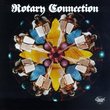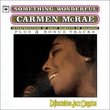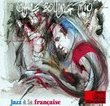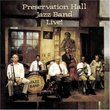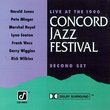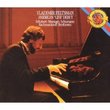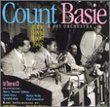| All Artists: Original Dixieland Jazz Band Title: 75th Anniversary Members Wishing: 0 Total Copies: 0 Label: RCA Original Release Date: 3/10/1992 Release Date: 3/10/1992 Genres: Jazz, Pop Styles: New Orleans Jazz, Traditional Jazz & Ragtime, Dixieland Number of Discs: 1 SwapaCD Credits: 1 UPCs: 078636109824, 035629065024, 078636109848 |
Search - Original Dixieland Jazz Band :: 75th Anniversary
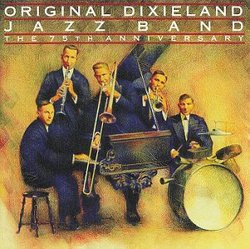 | Original Dixieland Jazz Band 75th Anniversary Genres: Jazz, Pop
|
Larger Image |
CD DetailsSimilar CDs
Similarly Requested CDs
|
CD ReviewsHistorical... Fun too... roarin20sGuy | 09/18/2000 (5 out of 5 stars) "No the Original Dixieland Jazz Band doesn't play on the same level as King Oliver's Creale Jazz Band would several years after these recordings were made, however these sessions were some of the 1st recordings made of Dixieland music, or jazz for that matter making these sessions both historical and enjoyable. This fun set is essential for any dixieland collector. Good sound quality and a great "Livery Stable Blues" where they imitate barnyard animals with their instuments. Great early jazz." Bix Beiderbecke learned Jazz from these recordings Dirk | Mass. | 01/15/2009 (5 out of 5 stars) "In 1919, a kid named BIX BEIDERBECKE learned cornet by sticking his head inside the family Victrola and playing along with THIS BAND's "Tiger Rag" and "Skeleton Jangle". - In a few weeks, he went from "blasting" short notes to playing along. In his incredibly hot first travelling band, the "Wolverines" a few years later, he was still covering many of these songs. - If the young Bix were here, he would rate the ODJB recordings as "five". - They were the real thing, and they were from New Orleans. Listen to the breakthrough ODJB through Bix's ears and don't believe the snobs. " Very good re-issue of some flashy & very important music bukhtan | Chicago, Illinois, USA | 09/28/2007 (4 out of 5 stars) "The Penguin Guide to Jazz Recordings has ranked this RCA-Victor (BMG) re-issue of the originial Victor recordings of this milestone musical theatrical group right below the Timeless re-issue. But listeners should be assured that the sound quality, while perhaps not as good as that found on the European label, is still very good, far better in fact than most re-issues of old acoustic recordings I've heard. Now, the music's aesthetic value and its authenticity can be disputed; I myself find the recordings produced by the New Orleans Rhythm Kings in 1922 better performed and much more validated by subsequent mainstream jazz tradition (meaning black; both of these outfits were white). Nevertheless, it seems to me that anyone who's interested in jazz music, coming from whatever direction, should give these records as listen. These are the early records, by the way, and just the Victors at that, up to 1922. (Their discography is marked by a striking promiscuity in label, as is that of many early jazz artists.) More than adequate, though, to get the point across, which was that this was shocking new music. It may not have been as good as the Rite of Spring, or, more to the point, the music being performed but not recorded by black ensembles, while these guys were becoming grammophone and stage stars by blackfacing it, but to this very day it still has that "in-your-face" quality, a quality not easy to perceive, usually, in music getting on to a hundred years old."
|

 Track Listings (23) - Disc #1
Track Listings (23) - Disc #1